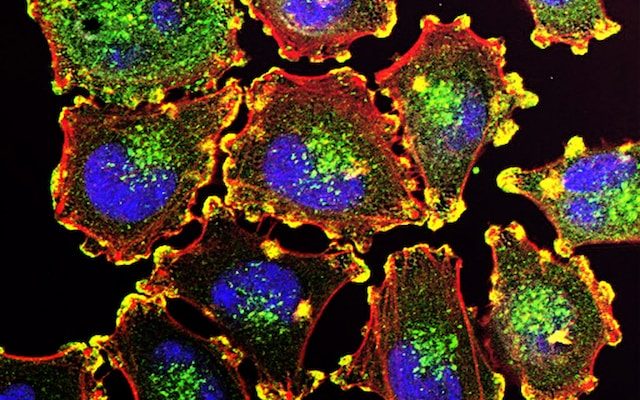Within the realm of regenerative medicine, (ET) has surfaced as a promising and innovative strategy for harnessing the body’s innate healing capabilities. Exosomes, minute extracellular vesicles discharged by cells, assume a pivotal role in facilitating cell communication and tissue repair.
The therapeutic use of exosomes has gained significant attention due to its potential to treat various medical conditions. This article explores the five primary advantages of the therapy of exosomes (ET) and its influence on general health and well-being.
Regeneration and Tissue Repair
(ET) stands out for its exceptional ability to promote regeneration and tissue repair. Laden with bioactive molecules such as growth factors, proteins, and nucleic acids, exosomes serve as key players in cellular signaling and regeneration.
The administration of exosomes to damaged or degenerated tissues not only stimulates repair and regeneration processes but also aids in the restoration of normal cellular function.
This versatility renders exosome therapy invaluable in addressing a spectrum of medical challenges, including injuries, wounds, and degenerative diseases like osteoarthritis, making it a versatile and promising approach in the landscape of regenerative medicine.
Moreover, the precision and efficacy of (ET) highlight its potential as a transformative intervention, demonstrating the capacity to significantly improve patient outcomes across a diverse range of health conditions.
As the scientific understanding of exosomes continues to deepen, the therapeutic applications are poised to expand, ushering in a new era of personalized and effective medical treatments.
Anti-Inflammatory Properties
Chronic inflammation is a pervasive factor in numerous diseases, spanning autoimmune disorders to neurodegenerative conditions. (ET) has showcased its effectiveness in mitigating this issue by proficiently modulating the immune response and reducing inflammation.
By curtailing excessive inflammation, exosomes not only alleviate discomfort but also play a pivotal role in preventing further tissue damage.
This holistic approach to managing chronic inflammatory conditions underscores the potential of (ET) in not just symptom relief but also in addressing the root causes of inflammatory diseases, promoting a more comprehensive and lasting improvement in patients’ well-being.
Enhanced Cellular Communication
Exosomes act as messengers between cells, orchestrating intercellular communication by transferring bioactive molecules. This intricate communication is vital for sustaining cellular balance and coordinating complex processes within the body.
Through (ET), this inherent communication system can be harnessed to not only facilitate the exchange of information between cells but also to fine-tune the orchestration of cellular activities.
This enhanced cellular communication plays a pivotal role in improving coordination not only in tissue repair and immune response but also in maintaining optimal overall cellular function. This becomes especially crucial in treating conditions where impaired cellular communication significantly contributes to the pathology.
Neuroprotective Effects
The therapeutic potential of exosomes extends to neurology, providing neuroprotective effects crucial in treating various neurological disorders. Exosomes’ unique ability to traverse the blood-brain barrier enables them to deliver their cargo directly to brain cells.
This targeted delivery not only promotes neuronal survival but also plays a pivotal role in reducing inflammation within the central nervous system.
Moreover, (ET) facilitates the regeneration of compromised neural tissues, presenting a promising path for addressing conditions such as Alzheimer’s disease, Parkinson’s disease, and traumatic brain injuries.
Ongoing research in this field continues to unveil the full spectrum of possibilities for exosome-based interventions in neurodegenerative disorders.
Minimized Side Effects and Improved Safety Profile
In contrast to traditional treatment methods, (ET) showcases a favorable safety profile with minimal side effects, offering a compelling alternative for individuals seeking regenerative treatments.
Obtained either from the patient’s autologous cells or from meticulously screened donors, exosomes significantly reduce the likelihood of immune reactions or adverse effects.
This heightened safety profile not only enhances the appeal of (ET) but also underscores its potential as a low-risk option in regenerative medicine.
The targeted and natural mechanisms of exosomes further augment the safety and efficacy of this therapeutic approach, solidifying its position as a promising avenue for medical intervention.
Conclusion
(ET) stands at the forefront of regenerative medicine, offering numerous benefits across various medical disciplines. From promoting tissue repair to exerting anti-inflammatory effects, enhancing cellular communication, providing neuroprotection, to ensuring a favorable safety profile, (ET) holds immense promise for the future of healthcare.
As ongoing research in this domain progresses, we foresee a continuous stream of breakthroughs in unlocking the therapeutic potential of exosomes across diverse medical conditions, ultimately enhancing the quality of life for numerous individuals.














Comments